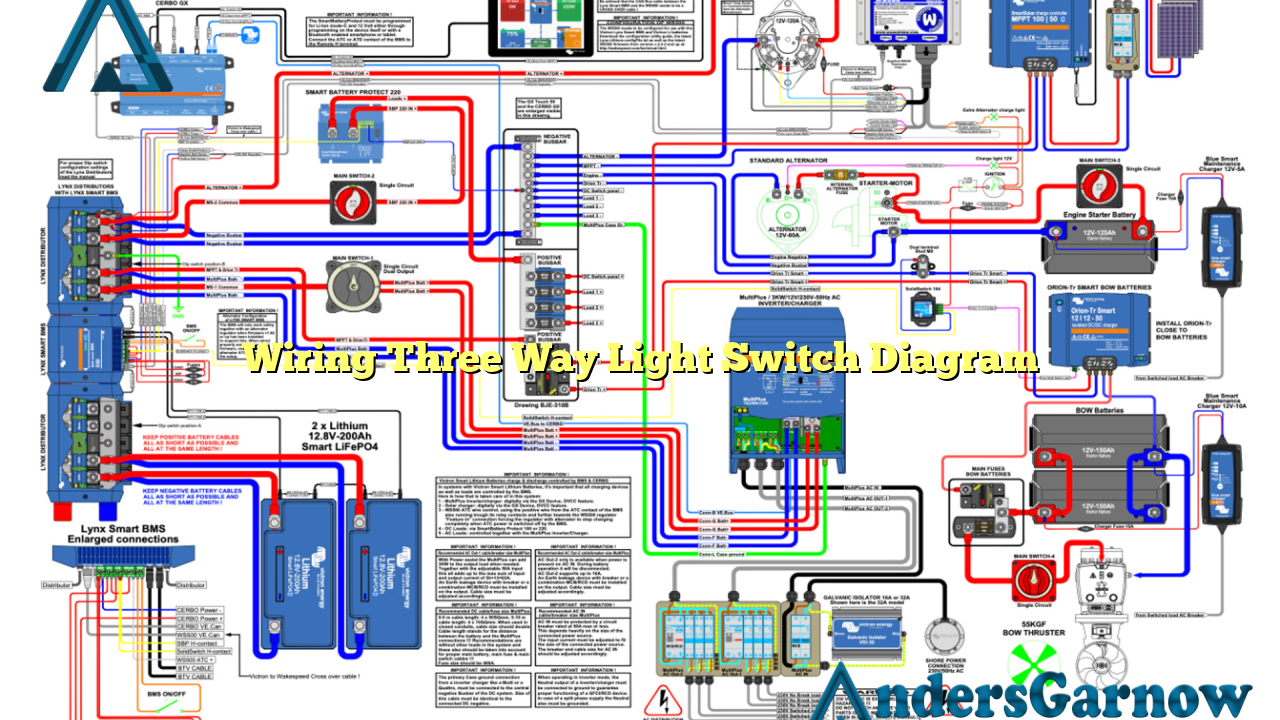Hello and welcome to our comprehensive guide on wiring a three-way light switch! In this article, we will walk you through the process of installing and wiring a three-way light switch, providing you with all the necessary information and resources to successfully complete this electrical project. Whether you are a DIY enthusiast or a professional electrician, this guide will help you understand the wiring process and ensure a safe and efficient installation.
1. Understanding the Three-Way Switch
Before diving into the wiring process, it is crucial to comprehend what a three-way switch is and how it functions. A three-way switch is commonly used in residential settings to control a light fixture from two different locations. It allows you to turn the light on or off from either switch, providing convenience and flexibility.
The three-way switch has three terminals: a common terminal (usually black screw) and two traveler terminals (usually brass screws). The common terminal is where the power source is connected, while the traveler terminals establish the connection between the switches. Understanding these terminals is essential for correctly wiring the three-way switch.
2. Required Tools and Materials
Before starting the wiring process, gather the necessary tools and materials to ensure a smooth installation. You will need:
- Wire cutters/strippers
- Screwdrivers
- Electrical tape
- Wire nuts
- Three-way switches
- 14/3 or 12/3 electrical wire (depending on the circuit)
- Wire connectors
Having all these items readily available will save you time and frustration during the installation process.
3. Step-by-Step Wiring Guide
Now, let’s walk through the wiring process step by step:
- Turn off the power to the circuit at the breaker box.
- Remove the existing switch plate and disconnect the old switch.
- Identify the common terminal on each three-way switch and connect the black wire from the power source to one of the common terminals.
- Connect the red and black wires from the traveler terminals of one switch to the traveler terminals of the other switch.
- Connect the remaining red and black wires from each switch to the corresponding traveler terminal on the opposite switch.
- Connect the white wires (neutral wires) together with a wire nut.
- Connect the ground wires to the green grounding screw on each switch.
- Carefully tuck all the wires into the electrical box and secure the switches.
- Install the switch plate and restore power to the circuit.
- Test the switches to ensure proper functionality.
Following these steps will result in a properly wired three-way light switch, allowing you to control your light fixture from multiple locations.
4. Pros and Cons of Three-Way Light Switches
Like any electrical component, three-way light switches have their advantages and disadvantages. Let’s explore them in detail:
| Advantages | Disadvantages |
|---|---|
|
|
5. Alternative Wiring Methods
While the traditional three-way light switch wiring method described above is widely used, there are alternative methods available. One popular alternative is the “wireless three-way switch” system, which utilizes wireless technology to control the light fixture from different locations without the need for physical traveler wires.
The wireless three-way switch system consists of a transmitter and one or more receivers. The transmitter is installed at one of the switch locations and wirelessly communicates with the receivers, which are installed in the other switch locations. This alternative provides a convenient and flexible solution for those who prefer to avoid the complexities of traditional wiring.
6. Frequently Asked Questions (FAQ)
Here are some common questions about wiring a three-way light switch:
Q: Can I use a single-pole switch instead of a three-way switch?
A: No, a single-pole switch cannot be used to control a light fixture from multiple locations. You need a three-way switch for that purpose.
Q: Are there different types of three-way switches?
A: Yes, there are various types of three-way switches available, such as toggle switches, dimmer switches, and smart switches. Choose the one that best suits your needs and preferences.
Q: Can I wire more than two switches to control a single light fixture?
A: Yes, it is possible to wire multiple three-way switches to control a single light fixture. However, the wiring becomes more complex, and additional considerations need to be taken into account.
Conclusion
Wiring a three-way light switch may seem daunting at first, but with the proper knowledge and guidance, it can be successfully accomplished. By following the step-by-step wiring guide provided in this article and understanding the advantages, disadvantages, and alternative options, you will be able to install a functional and convenient lighting control system in your home or any other suitable setting.

